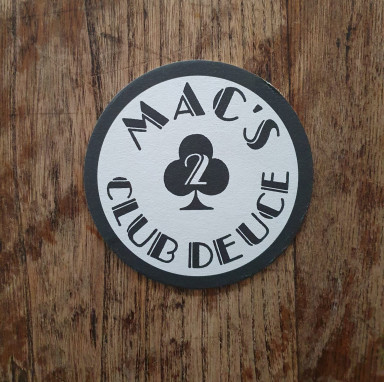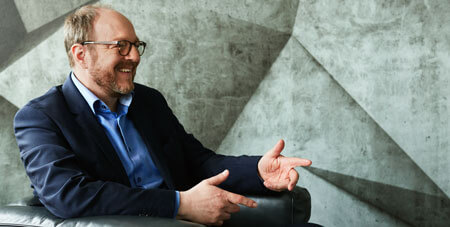

Stefan Kobel
,
Kobel's Art Weekly 50 2025
A well-rounded affair. After art auctions in New York broke numerous records this season, Christie's in London has now sold a well-known Fabergé egg for £22.9 million including buyer's premium, as Andy Battaglia reports in Artnews. Richard Whiddington recounts the history of the egg at Artnet. Cologne-based art insurance broker Stephan Zilkens assesses the result for WDR Aktuell (YouTube video).
Johannes Wendland summarises the auction results at Grisebach in Berlin in the Handelsblatt: "Thanks in no small part to the Bauer collection, Grisebach achieved a total turnover of €20.8 million, of which €5.7 million alone was attributable to the 115 lots in the collection, to which Grisebach dedicated an entire afternoon. The top lot here was the small ‘Self-Portrait to the Left’ from 1906 by Paula Modersohn-Becker, a reduced, intense oil tempera work on paper on cardboard, which Bauer had acquired in 1942 at the Ferdinand Möller Gallery. Möller was one of four German art dealers who were only allowed to sell art deemed ‘degenerate’ abroad. Now the work has gone to a European private collection for a record price of 1.3 million euros.
I followed the spectacular evening auction at Ketterer in Munich on 5 December for Artmagazine.
Art Basel Miami Beach cultivates its circus image, and the press that travels there largely plays along. Instagram and other media were full of the eye-catcher of this edition, a robot performance that Daniel Cassady describes for Artnews: "It seems Art Basel Miami Beach has perfected the art of the scroll-by spectacle. This year, the collective gasp was at the new Zero10 digital art section, and it happened every time one of about half a dozen robot dogs “went”. The installation, Regular Animals by Beeple (a.k.a. Mike Winkelmann), is part satire, part dystopia, part slapstick theatre. In it, a pen of robot dogs (or is it pigs?) have been fitted with grotesquely lifelike heads of Elon Musk, Mark Zuckerberg, Pablo Picasso, Andy Warhol, Jeff Bezos, and Beeple himself. They wander, they twitch, they clash—and then, at intervals likely engineered for maximum dramatic tension, they tip backward and eject a printed image from their backsides. [...] If the future is arriving faster than anyone would like, this was the rare artwork that let people greet it with a laugh. Sometimes, to understand the machines reshaping the world, you really do have to watch one poop."
Niklas Maak uses his trip to Miami to explain the art market, Miami and the USA to readers of the FAZ on 6 December: "The crazy record price rally of speculators and art flippers seems to be over, but after the first day of the fair, there were sales in all segments: David Zwirner reports the sale of an abstract painting by Gerhard Richter for 5.5 million dollars, White Cube sold Andreas Gursky's monumental collage of Harry Styles with fans for 1.2 million. That's a far cry from the auction records of the 2010s, but still astonishing, and there were also many sales in the lower segment. The mood is not euphoric, but relieved. [...] Miami Art Week has grown up around the Art Basel fair, a jungle of collection presentations and side fairs, including Design Miami. You have to imagine it a bit like an Ikea for the super-rich. Every third stand claims you can have an “immersive” experience here."
Daniel Cassady describes the exhausting après-fair life of an art market reporter from his hotel room on Collins Avenue in Miami Beach for Artnews.
Anika Meier welcomes Art Basel's new platform for digital art, ‘Zero 10,’ at Monopol: "The NFT community is in an uproar. There has been a lot of celebration and debate in recent days, especially on X. The usual slogans were there to be read: We are so back. Onboarding the masses. We did in fact disrupt. Kicked the door in. Things will never be the same. But then there were also voices trying to remind everyone that the idea was actually different: decentralisation, democratisation, transparency, bypassing gatekeepers, direct sales via marketplaces."
Art Review's new Power 100 is a whimsical mix of activist wishful thinking and brutal power realism. Wolfgang Tilmans is the first white person to make it to number 10. The world-famous artist Ibrahim Mahama ranks first. Silver and bronze go to Sheikha Al-Mayassa bint Hamad bin Khalifa Al-Thani and Sheikha Hoor Al Qasimi. For Marcus Woeller in WeLT, the Ghanaian is a logical choice from a historical perspective: ‘Ironically, he fits perfectly into a system that creates new centres of power – and at the same time rewards artists who offer an awareness of problems that looks good in museums and pavilions. Mahama's aesthetics criticise the very forces that finance them. That, too, is an old courtly mechanism.’ Birgit Rieger explains the original weighting in the Tagesspiegel: ‘Mahama, a sharp critic of capitalism who often addresses the cycles of raw materials and resources in his art, invests the money he earns on the art market in residencies or independent art institutions in Ghana that support local artists. The fact that he builds his own structures is the reason why he landed in first place on the “Power 100” list.’ However, the same reasoning could also be used to put Tillmanns, Amoako Boafo or Albert Ohlen on the throne. And if you're going to kowtow to capital, you should at least include Andrew E. Wolff, who owns two of the most important art platforms, Artnet and Artsy. But he's not from the Gulf, so he doesn't fit into the narrative.
The merger of three already heavyweight players opens up a new dimension for the term ‘mega gallery.’ Pace Di Donna Schrader is the name of the new heavyweight, according to a press release. Robin Pogrebin explains in the New York Times: "PDS is to begin operations early next year, to open its physical space in summer 2026 (in a location that has yet to be determined), and present a historical exhibition next fall (whose subject has not yet been announced). With access to Pace's resources and locations in Los Angeles, London, Geneva, Berlin, Seoul and Tokyo — as well as its New York headquarters — PDS plans to build on Pace's relationships with post-war artists and estates, as well as its history in the market."
Hauser & Wirth's acquisition of part of the Palazzo Forcello de Seta in Palermo points to long-term planning. If the Italian state does not exercise its right of first refusal, the gallery could begin exhibiting there in 2030, writes George Nelson in Artnews.
50-minute interview with Wolfram Weimer available on ttt in the ARD media library.
Saskia Trebing has another tip for what to avoid watching from the ARD programme on Monopol: she finds the ‘documentary’ with the slightly misleading title ‘Leon Löwentraut – Genius or Delusion’ ‘downright disturbing’: "What is annoying, however, is how the criticism is incorporated into the documentary. The Löwentrauts (in addition to Leon, his parents also play a prominent role) are given ample space to stylise themselves as outlaws and targets of an envious and humourless art world. Negative social media comments roll across the screen as if in a documentary about hate crimes. The rejection by the established establishment, however justified it may be, is nothing more than a useful element of the PR strategy to present themselves as anti-heroes of an elitist system that simply cannot stand to see them succeed."
Ursula Scheer reports on the departure of further specialists from Sotheby's Germany in the FAZ.
semi-automatically translated
